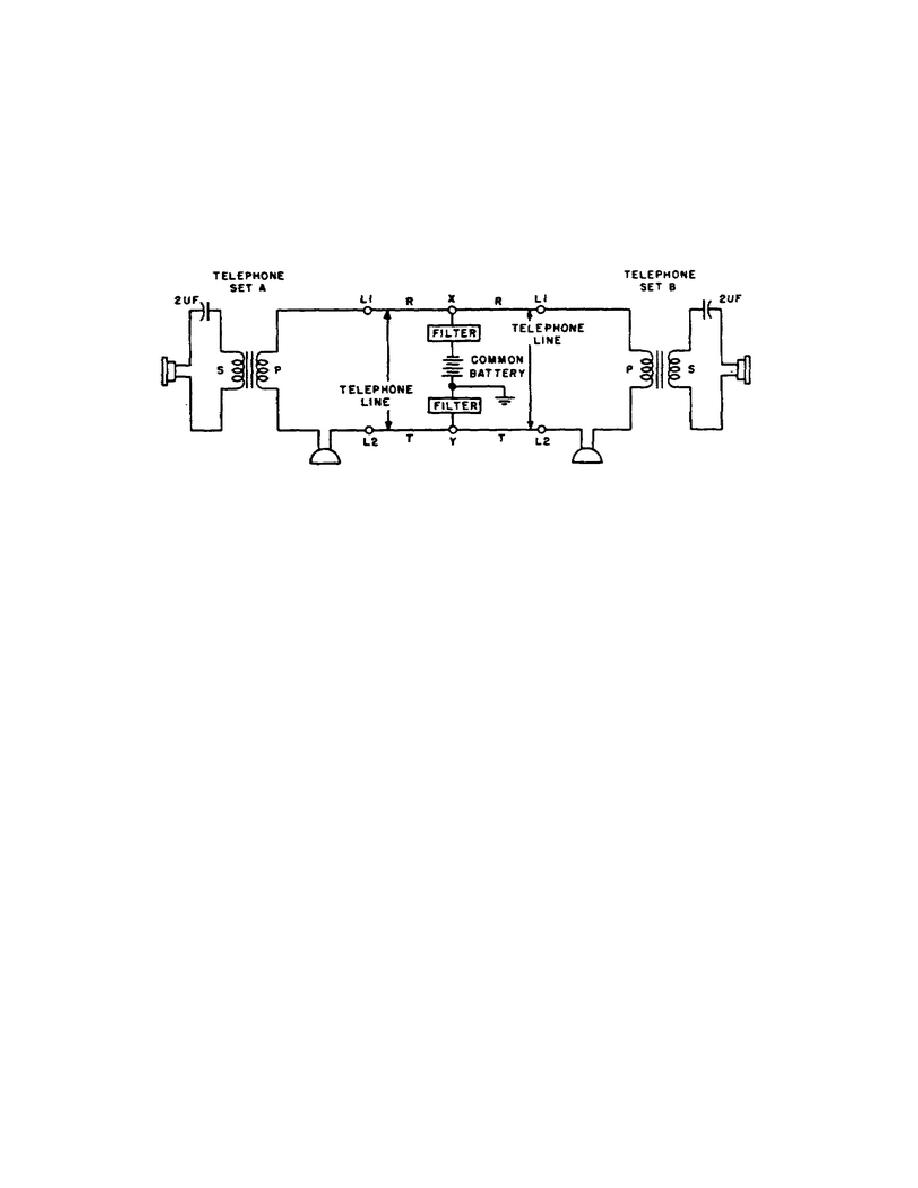
(3) Although the circuits mentioned above seem to be of the same general types as those in a local-battery
switchboard, they actually are different in many respects, primarily because of the difference in battery supply. The
structure and operation of the circuits associated with common-battery switchboards, together with their interrelation and
the role of the switchboard operator in making connections between telephone stations, are discussed in later sections of
this chapter.
b. Types. Common-battery switchboards in general may be classified as nonmultiple and multiple.
(1) A nonmultiple switchboard is one in which each line connecting a telephone station to the switchboard
terminates in only one jack. This type of switchboard obviously limits the number of lines that can be serviced by a single
FIGURE 38. Simple Common Battery Circuit
operator, or even by several operators. It is obvious that it often might be necessary to connect a calling line terminating
on a line jack located at one end of the switchboard to a called line terminating on a line jack at the other end, which
would result in a confusing network of cords. For this reason, the use of nonmultiple switchboards is limited to systems
that do not require more than three operators to handle the traffic.
(2) A multiple switchboard is one in which each line connecting a telephone station to the switchboard
terminates in several line jacks, connected in parallel or multiple, at different points on the switchboard. This makes it
83


 Previous Page
Previous Page
